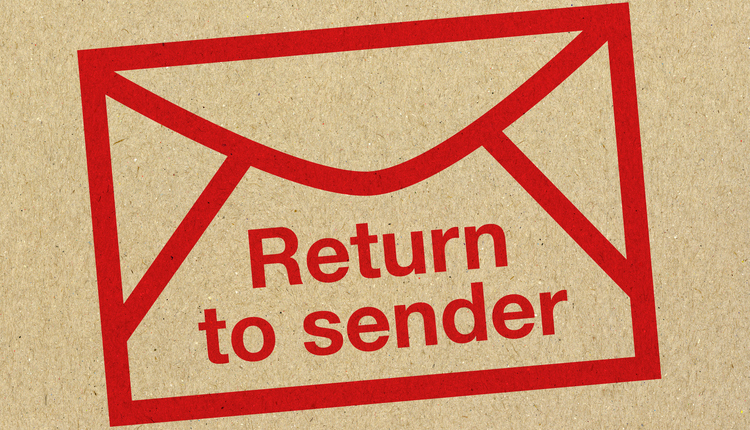As you walk around your company's offices and worksites today, do you see lots of empty desks? Notice that people you used to greet every day aren't around so much anymore? Hear an echo?
If so, your experience matches what managers have seen across many industries. Though some companies are now trying to entice (or force) workers back to the office, the way work is done and where people do it has permanently changed for many organizations.
· In 2020, 42% of the U.S. labor force was working from home full-time - Stanford Institute for Economic Policy Research (SIEPR)
· Remote work is expected to increase by 81% in 2024 - Forbes
Going remote has been a game-changer for many businesses, but it has also presented a unique set of challenges, especially for mail center managers. They need to deliver mail to workers who are no longer physically present in the office. The nature of remote work means that companies might spread employees over different cities, states, or even countries, making traditional mail delivery impractical.
If your company's workers are no longer in the office every day, and it looks like that might be a permanent arrangement, it is time to develop a permanent solution. What was once a straightforward system of sorting and delivering mail now requires a fresh approach.
Mail center managers are asking questions such as:
· What are the options?
· How can the mail center ensure important documents reach the right person on time?
· What about privacy and confidentiality?
These are all challenges that face corporate mail centers as they grapple with a distributed workforce they did not design their facility to serve.
Exploring Solutions
One option could be to digitize all incoming mail. This would involve scanning and emailing the documents to the respective recipients. Although this method could be time-consuming and labor-intensive, it would effectively end the need for physical delivery. Plus, digitized mail is easy to store, search, and retrieve, which offers an added benefit. The drawback to this method is the time the mail center staff spends opening, scanning, and digitally distributing documents the recipients have no interest in viewing. Yes, companies can automate some of those tasks. But there's no doubt that a good portion of the material arriving in the mail center is of little value to the addressees. They will waste labor hours on tasks that provide no benefit.
Another choice would be to outsource mail delivery to a professional courier service or forward the mail in bulk according to pre-arranged business rules. This could be a workable option for businesses with employees in the same city or state. However, for those with a widely dispersed workforce, this solution might be less practical because of high shipping costs and longer delivery times.
A third possibility is to use a virtual mailbox service. These services offer a physical mailing address where the company receives all its mail. The mailbox service staff opens, scans, and sends the mail to the intended recipients electronically. This could be an ideal solution for businesses that want to maintain a single, centralized mailing address while still catering to the needs of remote workers. However, this may not be a comfortable solution for organizations that receive confidential documents or checks through the mail. The responsibility for security and safekeeping would fall upon the mailbox service and the chain of custody is broken.
I used such a service when I was working out of town for extended periods years ago, and it worked fairly well. However, the lag time between when the mail was received and when I actually had it in my hand was sometimes frustrating. This may not be an issue in every case, but should be considered. Another downside to virtual mailbox services is they require organizations to notify all the entities who send them mail of a new address. This notification project can be tedious and time-consuming.
Finally, companies can adopt a hybrid approach for handling mail, where some mail is kept in the mail center for employees to collect. Other mail is scanned and sent to employees digitally. You may even offer courier services for employees that need physical documents but won't be visiting the office at all. This method offers the most flexibility.
When mail is received, the mail center scans the front of the mail piece and sends a notification to the addressee. The employee may be in the office, at a satellite location, in the field, or at home when they decide about the disposition of their mail pieces. Their options may include:
1. Open the mail, scan the contents, and email them the images.
2. Forward the physical mail piece, unopened, to them or to someone they designate within the organization.
3. Store the mail piece in the mail center until they arrive to retrieve it.
4. Destroy the mail piece.
Ensuring Accurate Delivery
In most companies, mail distribution and delivery traditionally relied on the knowledge and experience of mail center clerks and internal couriers. These individuals kept track of corporate employees. Working from memory and notes, they could route mail addressed to an employee to their current replacement after a resignation or promotion, even if the addressee hadn't worked for the company for some time.
Companies need advanced software to automate this function, which sorts mail and informs individuals using business rules based on information obtained from the front of the mail piece. The software and the business rules take the place of the mail clerk's knowledge and supporting notes.
Companies can build delivery preferences into the software. Payments, for instance, may always be routed to the Accounts Receivable department, or vendor invoices to Accounts Payable. Offsite employees can choose to have their mail opened and scanned or receive notifications for them to decide about delivery.
Factoring in Privacy and Confidentiality
Regardless of the solution an organization chooses to handle their incoming mail, privacy and confidentiality must remain paramount. Whoever handles the mail must be trustworthy and reliable, especially when dealing with sensitive business documents. Any digitized mail should be securely stored and encrypted to prevent unauthorized access. Mail waiting for pickup must be stored in a secured area until retrieved by an employee with proper ID.
One benefit of an in-house hybrid digital mail approach is the ability to log the events associated with the mail. This provides analytics to examine the inbound mail characteristics of the organization. It also establishes a chain of custody and tracks individual mail pieces from the time the mail center received them until they are delivered to the recipient.
To ensure that mail reaches the right person at the right time, a robust tracking system is crucial. A digital tracking system can handle detailed tracking information, including the sender, the intended recipient, and the delivery status, efficiently. This system helps avoid any misplacement or loss of mail, providing peace of mind for both mail center managers and employees.
Automation for the Mail Center
Companies are spending lots of money to automate in many areas. The mail center may not be on the top of the priority list for investing in automated solutions, but it can't be ignored. For many companies, incoming physical mail is still a critical component of how business is done. Automated solutions differ, so how a company is organized, what kind of mail they receive, and the urgency of those mail pieces will all play a role in deciding which inbound mail handling strategy is best for them.
The shift to remote work has upended many of the traditional ways companies conduct business and demands innovative solutions to ensure efficient inbound mail processing. By embracing digital transformation, implementing notification systems, and providing flexible delivery options, mail center managers can ensure timely and efficient mail delivery to remote employees.
Mike Porter works with companies in the printing and mailing industries to help them raise awareness for their companies, improve their rankings on search results, inform potential customers about the value of their products and services, and keep prospects interested as they proceed through the buying process. Learn more about his services at www.pmccontentservices.com. Follow @PMCmike on Twitter, or send him a connection request on LinkedIn.
This article originally appeared in the September/October, 2023 issue of Mailing Systems Technology.
















![GettyImages-617745578-[Converted]](https://cms-static.wehaacdn.com/mailingsystemstechnology-com/images/GettyImages-617745578--Converted-.1013.widea.0.jpg)